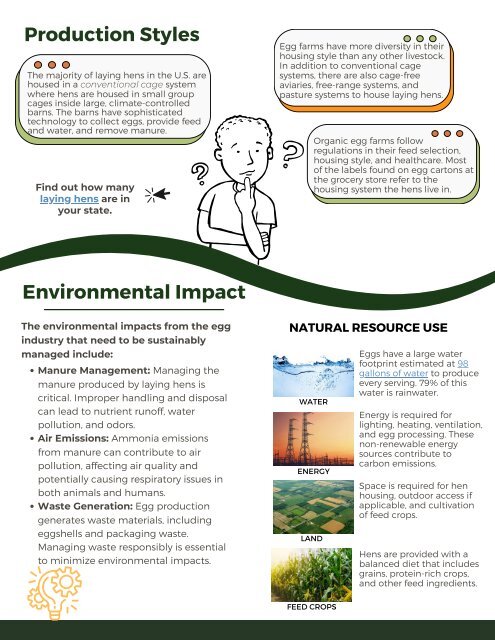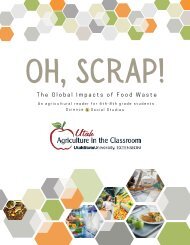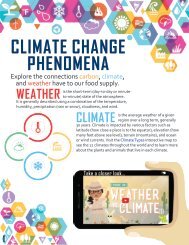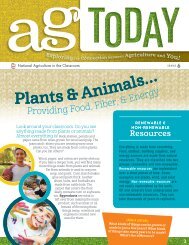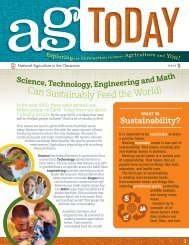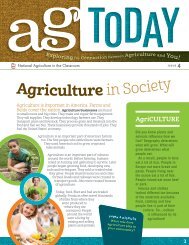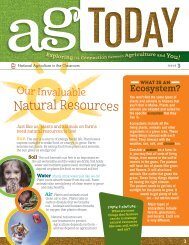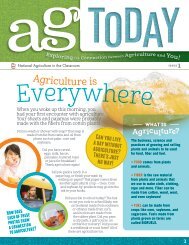Livestock Production
Create successful ePaper yourself
Turn your PDF publications into a flip-book with our unique Google optimized e-Paper software.
<strong>Production</strong> Styles<br />
The majority of laying hens in the U.S. are<br />
housed in a conventional cage system<br />
where hens are housed in small group<br />
cages inside large, climate-controlled<br />
barns. The barns have sophisticated<br />
technology to collect eggs, provide feed<br />
and water, and remove manure.<br />
Find out how many<br />
laying hens are in<br />
your state.<br />
Egg farms have more diversity in their<br />
housing style than any other livestock.<br />
In addition to conventional cage<br />
systems, there are also cage-free<br />
aviaries, free-range systems, and<br />
pasture systems to house laying hens.<br />
Organic egg farms follow<br />
regulations in their feed selection,<br />
housing style, and healthcare. Most<br />
of the labels found on egg cartons at<br />
the grocery store refer to the<br />
housing system the hens live in.<br />
Environmental Impact<br />
The environmental impacts from the egg<br />
industry that need to be sustainably<br />
managed include:<br />
Manure Management: Managing the<br />
manure produced by laying hens is<br />
critical. Improper handling and disposal<br />
can lead to nutrient runoff, water<br />
pollution, and odors.<br />
Air Emissions: Ammonia emissions<br />
from manure can contribute to air<br />
pollution, affecting air quality and<br />
potentially causing respiratory issues in<br />
both animals and humans.<br />
Waste Generation: Egg production<br />
generates waste materials, including<br />
eggshells and packaging waste.<br />
Managing waste responsibly is essential<br />
to minimize environmental impacts.<br />
NATURAL RESOURCE USE<br />
WATER<br />
ENERGY<br />
LAND<br />
Eggs have a large water<br />
footprint estimated at 98<br />
gallons of water to produce<br />
every serving. 79% of this<br />
water is rainwater.<br />
Energy is required for<br />
lighting, heating, ventilation,<br />
and egg processing. These<br />
non-renewable energy<br />
sources contribute to<br />
carbon emissions.<br />
Space is required for hen<br />
housing, outdoor access if<br />
applicable, and cultivation<br />
of feed crops.<br />
Hens are provided with a<br />
balanced diet that includes<br />
grains, protein-rich crops,<br />
and other feed ingredients.<br />
FEED CROPS


